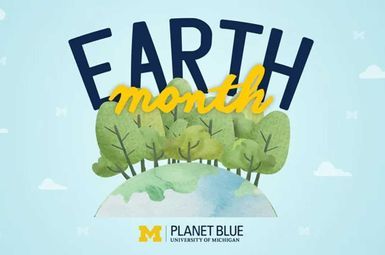
U-M is marking late March and all of April with a series of events focused on sustainability and climate action, continuing a tradition that began with the first “Teach-In on the Environment” in 1970—which grew into what is now known as Earth Day.

Climate change is caused and accelerated primarily by the burning of carbon-based fossil fuels: coal, oil, and natural gas. Impacts of the climate crisis depend on the scope, speed, and willingness of society to transition to a low- or zero-carbon economy. University of Michigan experts are leading new green fuel development and assessing the continued viability of fossil fuels, the economic and environmental harm that they exact on society, and innovations toward carbon management. Researchers are focusing on everything from gains in fuel efficiency to developments, investments, and innovations toward a circular carbon economy. Central to this analysis is the Global CO2 Initiative, which aims to turn a liability into an asset through the development of CO2 removal and utilization technologies and solutions.

U-M is marking late March and all of April with a series of events focused on sustainability and climate action, continuing a tradition that began with the first “Teach-In on the Environment” in 1970—which grew into what is now known as Earth Day.

"Train travel in America is much more limited than, for example, in Europe. You often can’t get where you want to go. But you can get to Lincoln from Ann Arbor, with just one change in Chicago. What’s the carbon savings? A flight to Lincoln would add about 800 kg of CO2 emissions to my annual budget. The train trip is more like 85 kg. Takes more time, for sure, but that’s a big part of why emissions from train travel are so much lower."
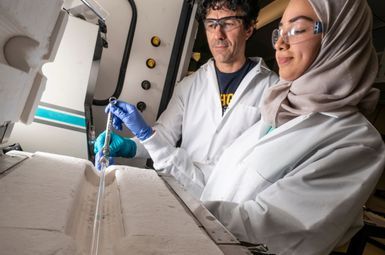
A new way to make an important ingredient for plastics, adhesives, carpet fibers, household cleaners and more from natural gas could reduce manufacturing costs in a post-petroleum economy by millions of dollars, thanks to a new chemical reactor designed by U-M engineers.
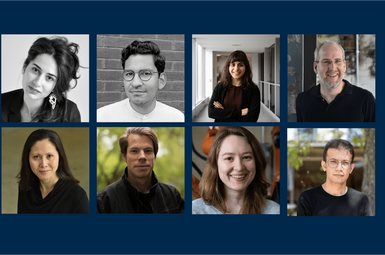
What materials and methods will allow us to design and construct low-carbon buildings? How can architects and designers promote social justice through community ownership of land? Through its Pressing Matters grant program, Taubman College has funded five faculty-led research and creative practice projects that address these questions.
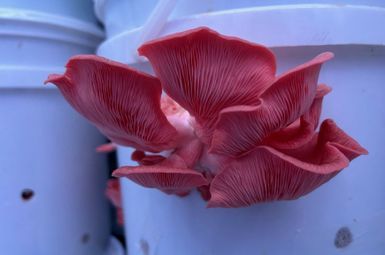
Mushrooms come with a seemingly endless list of things that make them unique, including some that glow in the dark, some that are poisonous, and others that have been living for thousands of years. In the natural world, they are known as efficient decomposers and fast growers that play an integral role in maintaining and restoring the ecosystem.
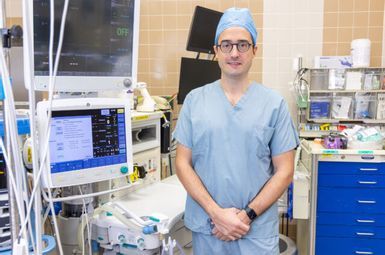
The Green Anesthesia Initiative, or GAIA — an homage to the personification of Earth in Greek mythology — was established in 2022 by the Department of Anesthesiology. Its initial goal, now surpassed, was to reduce emissions from inhaled anesthesia by 80% within three years from a 2021 baseline, while ensuring patient safety.
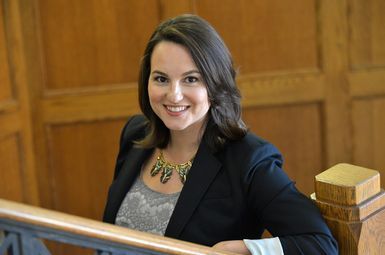
The United States recently passed major climate change laws, such as the Infrastructure Investment and Jobs Act (IIJA), the Inflation Reduction Act of 2022 (IRA), and the CHIPS and Science Act, which allocate funding with a goal of expanding energy-transition initiatives. Analysts suggest new investments could reduce greenhouse gas emissions by more than 40% below 2005 levels by 2030.
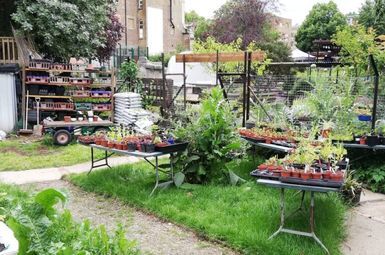
A new U-M-led international study finds that fruits and vegetables grown in urban farms and gardens have a carbon footprint that is, on average, six times greater than conventionally grown produce.
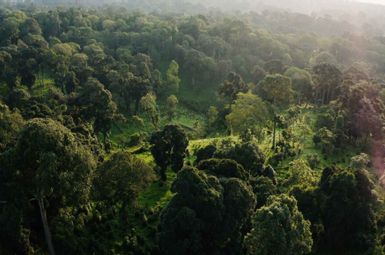
Climate change is reshaping forests differently across the United States, according to a new analysis of U.S. Forest Service data. With rising temperatures, escalating droughts, wildfires and disease outbreaks taking a toll on trees, researchers warn that forests across the American West are bearing the brunt of the consequences.
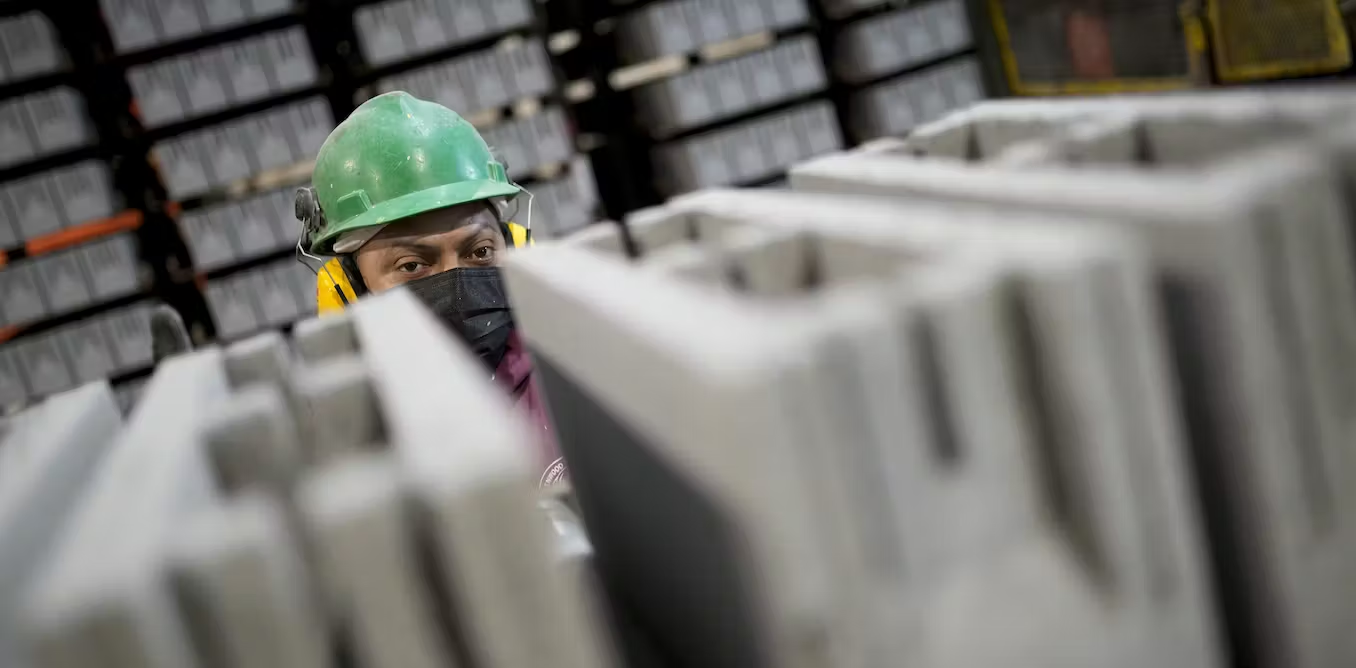
Capturing carbon dioxide from the air or industries and recycling it can sound like a win-win climate solution. The greenhouse gas stays out of the atmosphere where it can warm the planet, and it avoids the use of more fossil fuels. But not all carbon-capture projects offer the same economic and environmental benefits. In fact, some can actually worsen climate change.
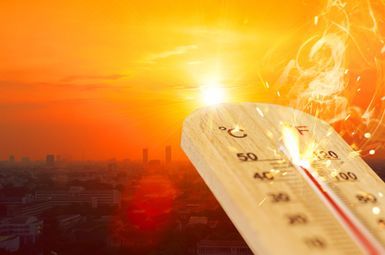
"“And the warming will continue to accelerate until we halt the burning of fossil fuels. This means continued worsening extreme heat and heat waves, but also many other worsening climate extremes driven by warmer temperatures. More severe droughts, more intense rainfall, more devastating hurricanes and bigger, more widespread wildfires."
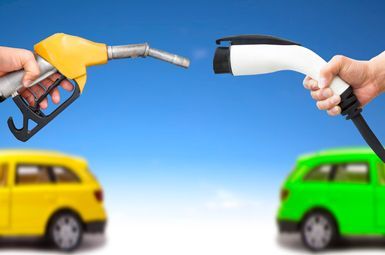
Is it actually cheaper to own an electric vehicle instead of a gas vehicle? It depends. U-M researchers say that where you live matters. For instance, a midsize SUV costs more to own in Detroit than in San Francisco—one of the most expensive cities in the country.
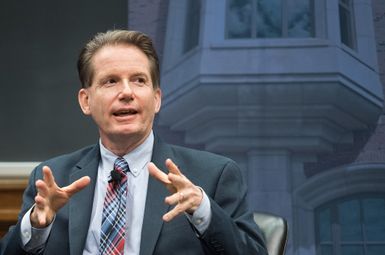
At the COP28 climate summit in Dubai, nearly 200 nations approved a global pact that calls for transitioning away from fossil fuels—a first. The deal also calls for tripling the use of renewable energy, doubling energy efficiency and slashing methane emissions.
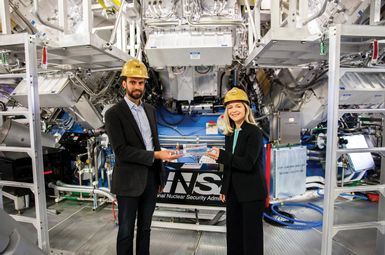
Once derided as “forever 30 years away,” fusion energy has a new swagger. Will it last?

LED lighting is up to 44% more efficient than 4-foot fluorescent tubes, according to a U-M study. Lighting is responsible for 11% of electricity use in commercial buildings and residential basements, garages and shops. Linear recessed lighting systems, which are also called linear fixtures or troffer lights, are among the largest opportunities for energy efficiency improvement, given their long operating hours.
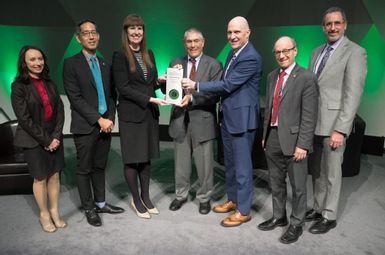
For his work refining agricultural waste into materials for lithium-ion batteries and other sustainable energy technologies, Michigan Engineering Professor Richard Laine has been honored by the US Environmental Protection Agency (EPA.)
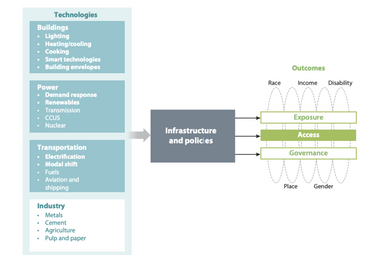
Because large disparities in access to green technologies exist between countries in the Global North and the Global South and among different demographic groups within those countries, it’s important to focus on equity in access to energy services and not simply on energy technologies, according to a new U-M review paper.

New research suggests that a realistic estimate of additional global forest carbon-storage potential is approximately 226 gigatonnes of carbon—enough to make a meaningful contribution to slowing climate change.
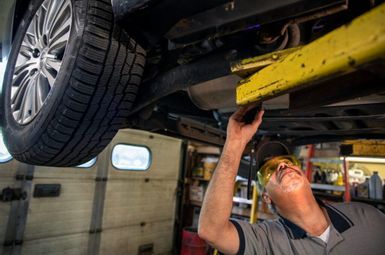
Electric vehicles (EVs) represent the largest auto industry shakeup since, perhaps, the introduction of the assembly line more than a century ago. Moving consumers from the internal combustion engines (ICE) that have powered their transportation since birth to something fundamentally different means major changes at all levels of the business.
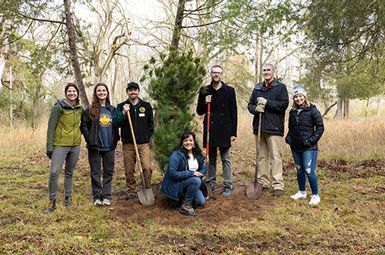
As part of the Great Lakes St. Lawrence Governors and Premiers’ new initiative aimed at planting 250 million trees in the Great Lakes region by 2033, the U-M School for Environment and Sustainability partnered with the Michigan Department of Natural Resources ( and GSGP to hold a ceremonial tree planting on November 9 at one of SEAS’ research natural areas.
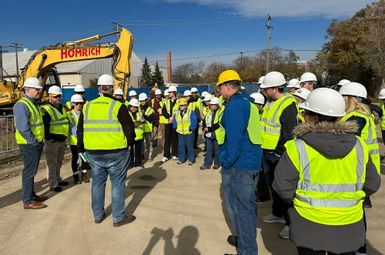
More than 100 U-M community members gathered Nov. 3 at the site of the future Central Campus residential development to observe construction efforts that will advance the university’s progress toward carbon neutrality.
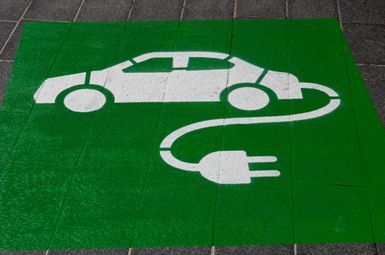
One of the goals outlined by the Biden administration’s National Climate Task Force in 2021 was to reduce U.S. greenhouse gas emissions to 50%-52% below 2005 levels by 2030. Now, a U-M study investigates one of the strategies to achieve this goal, which is to increase new vehicle sales to 50% electric by 2030. The study also reveals a path to meeting the targets.
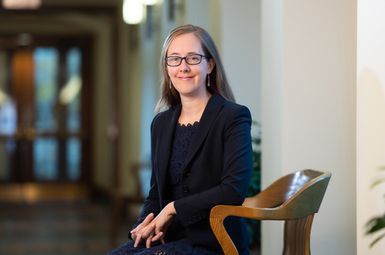
"In many parts of the world, the air pollution monitoring network is inadequate, so people just don't know how bad pollution is in their neighborhoods. And even when they have a monitor nearby, households might not be aware of the full range of health damages that they could be experiencing. So people don't always take adequate measures to protect themselves."
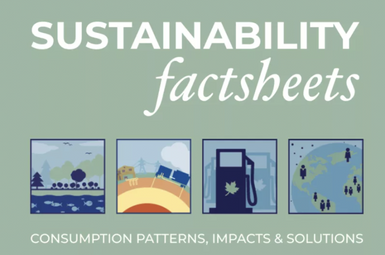
Each peer-reviewed factsheet presents data on patterns of use, life cycle impacts, and sustainable solutions. Updated annually by a current SEAS graduate student, the collection is a free resource to inform journalists, policymakers, business professionals, students, teachers and the public.
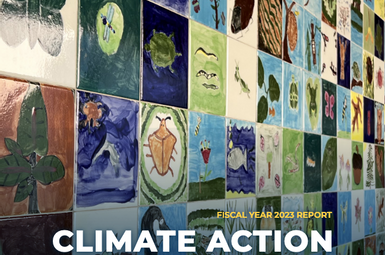
Since 2010, the university has reduced its total greenhouse gas emissions by 28%, even as total building area has increased by 14%. U-M is on pace to reduce its total quantified emissions by 50% by 2025, exceeding Intergovernmental Panel on Climate Change guidance to reduce emissions by 45% by 2030.
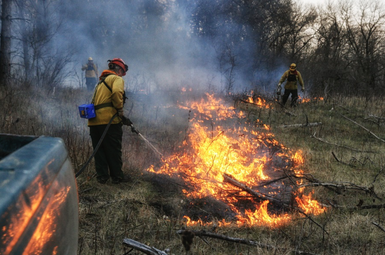
Savannas and grasslands in drier climates around the world store more heat-trapping carbon than scientists thought they did and are helping to slow the rate of climate warming, according to a new study.
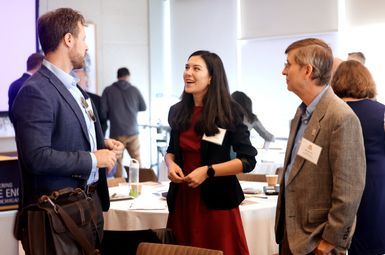
Electric and hybrid aircraft, hydrogen power, advanced airframes and more were on the table at U-M's first symposium on sustainable aviation.
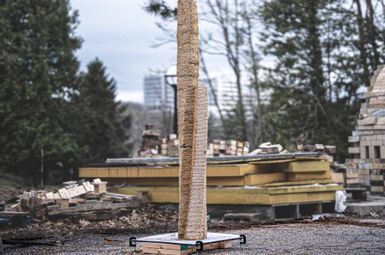
The BioMatters team at U-M has developed a fully biodegradable, reusable and recyclable material to replace the wasteful concrete formwork traditionally used across the construction industry. The base of this material is upcycled sawdust—millions of tons of sawdust waste are created each year from the 15 billion cut trees and often burned or dumped in landfills left to contribute to environmental pollution.
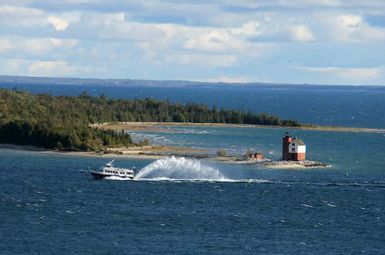
Should states and Indigenous nations be able to influence energy projects they view as harmful or contrary to their laws and values? This question lies at the center of a heated debate over Enbridge Energy’s Line 5 pipeline, which carries oil and natural gas across Wisconsin and Michigan.
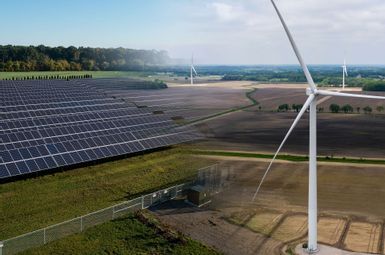
The Center for EmPowering Communities will help Michigan communities tackle the planning and zoning challenges related to renewable energy projects such as wind and solar installations. In addition, the center will spur collaborative research that integrates social science with technology design, community engagement and policymaking.
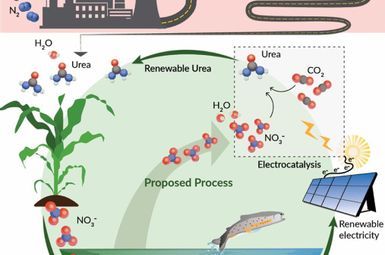
The production of the fertilizer urea is one of the largest carbon dioxide emitters in the chemical industry, but it doesn’t have to be that way. With $1.3 million in funding from the W. M. Keck Foundation, a new, more sustainable approach for producing urea will be tested at U-M.
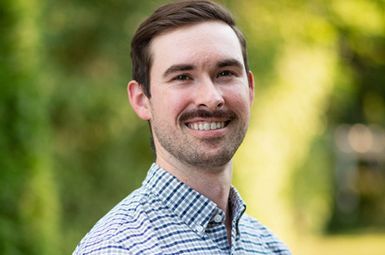
The winning submission provided a hyperlocal blueprint for safe CO2 sequestration and integrative city planning in Houston, Texas, with a replicable pipeline system designed for major metropolitan areas.
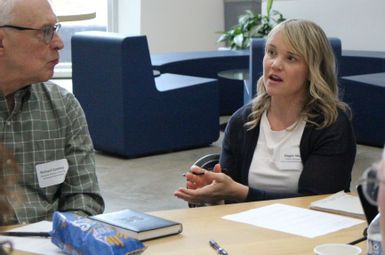
A cross-functional group is working to advance a strategic roadmap for developing targeted research domains and building out capacity and industry partnerships that will position U-M as a leader in accelerating low-carbon building innovations.
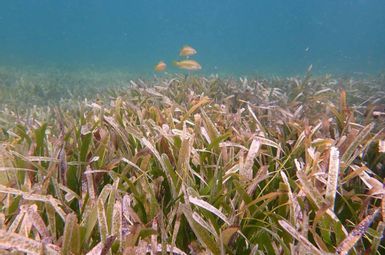
Discussions of valuable but threatened ocean ecosystems often focus on coral reefs or coastal mangrove forests. Seagrass meadows get a lot less attention, even though they provide wide-ranging services to society and store lots of climate-warming carbon.
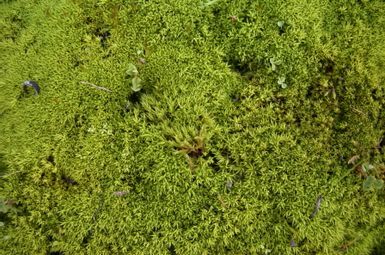
Plant life plays a crucial role in fighting climate change by absorbing and transforming greenhouse gases like carbon dioxide. For instance, over its lifetime, a tree can absorb more than a ton of carbon from the air and store it in wood and roots.

Engaging researchers from nine units across U-M and several other academic institutions, along with multisectoral partners, the projects will explore community solar, agrivoltaics, carbon-neutral building materials, aviation fuel waste reduction, and sustainable archeology.
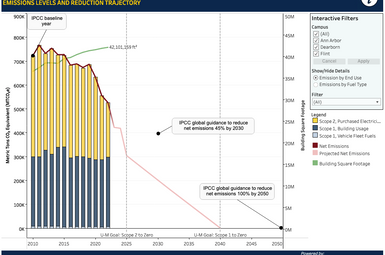
U-M has launched a report on the use of $300 million in “green bonds,” updated sustainability dashboards and building guidelines, and announced that it is the first university to join the First Movers Coalition, which aims to advance sustainable industrial technologies.

Preserving the diversity of forests assures their productivity and potentially increases the accumulation of carbon and nitrogen in the soil, which helps to sustain soil fertility and mitigate global climate change.
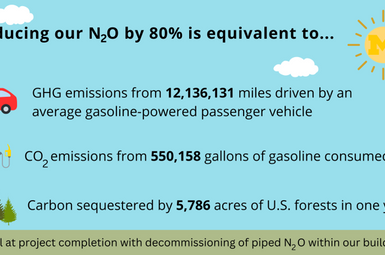
Anesthesiology is a carbon-intensive specialty, including the recurring use of inhaled agents which can lead to significant greenhouse gas emissions and global warming over an extended period. The Green Anesthesia Initiative aims to implement environmentally sound health care practices while continuing to protect public health and provide excellence in patient care.
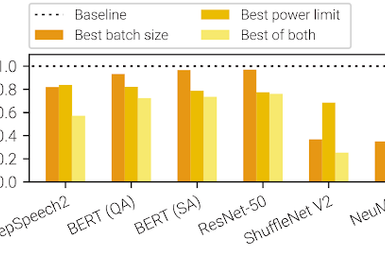
Deep learning models that power giants like TikTok and Amazon, as well as tools like ChatGPT, could save energy without new hardware or infrastructure.
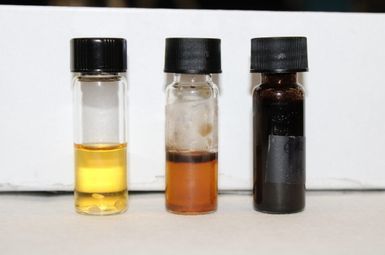
A U-M team, along with researchers and staff from Eastern Michigan University, Duke University and cleantech company 374Water, received $200,000 to fund research around converting lawn, garden and food waste from U-M’s Matthaei Botanical Gardens into valuable products, as well as heat and energy for the gardens’ facilities.
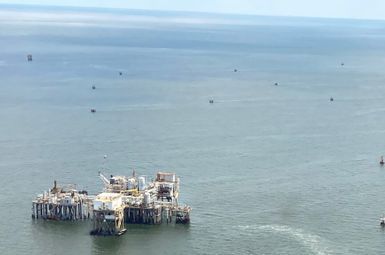
By directly measuring greenhouse gas emissions from an airplane flying over the Gulf of Mexico, a U-M team found that the nation’s largest offshore fossil fuel production basin has twice the climate warming impact as official estimates.

Researchers and staff from U-M, Eastern Michigan University, Duke University, and 374Water recently won a grant to turn Matthaei Botanical Gardens’ trash into treasure. The project aims to reduce greenhouse gas emissions by preventing organic waste from going to landfills, where it then rots and emits greenhouse gases like carbon dioxide and methane.

Architect Mania Aghaei Meibodi and researchers Alireza Bayramvand and Yuxin Lin of the DART lab at U-M’s Taubman College of Architecture and Urban Planning, have developed a method for creating ultra-lightweight, waste-free concrete. The method reduces weight by 72% as compared to conventional, solid concrete of the same size, and is leading to new partnerships and patents beyond U-M.
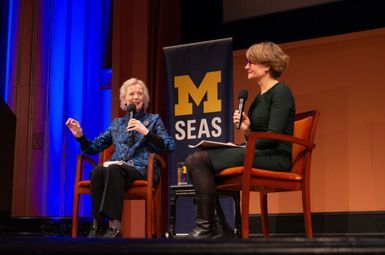
“We are on the cusp of a clean-energy world, which we should all be immensely excited about and look forward to. Yet, we have this strange paradox where our world continues to warm 2.4 degrees above pre-industrial levels, and we don’t talk about it."